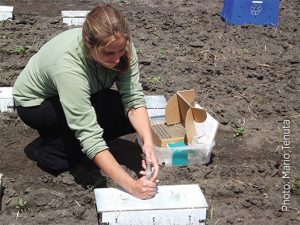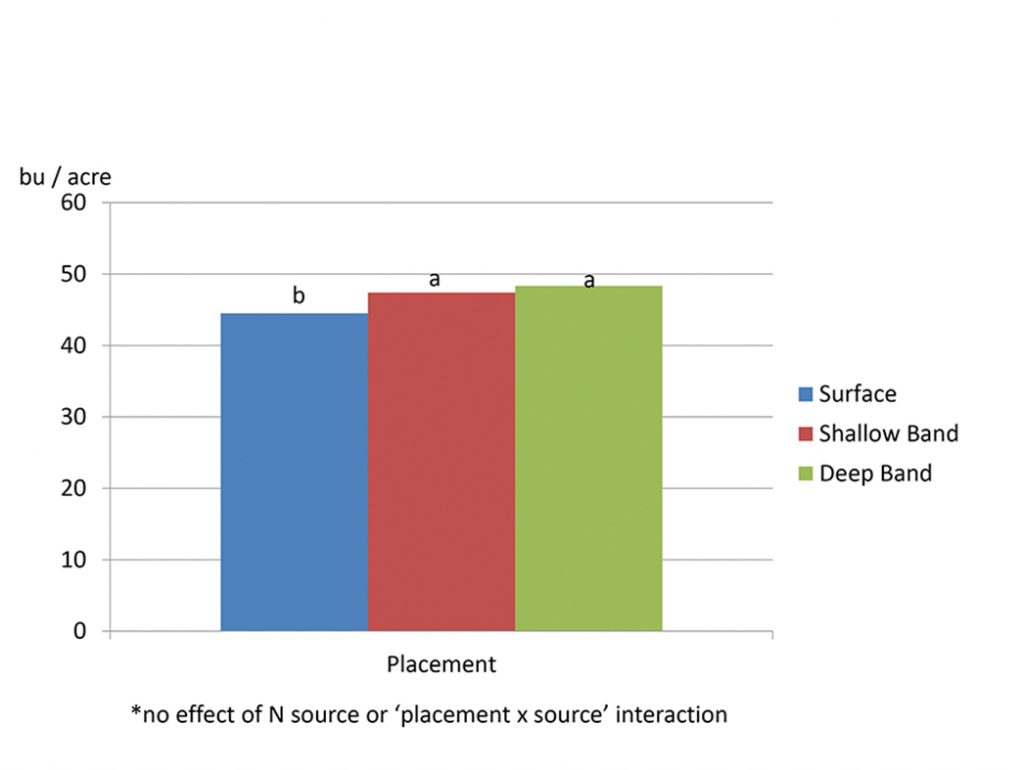Canola yields lower with fall surface-placement of nitrogen
KEY RESULT:
This Manitoba study found that nitrogen source did not affect canola yield, but fertilizer placement did. Fall surface application of granular urea and enhanced efficiency fertilizer products produced lower yield (13 bu./ac.) than spring surface applications of the same products. For spring applications, surface placement had lower yields (3 to 5 bu./ac.) than shallow or deep banding.
PROJECT TITLE, PRINCIPAL INVESTIGATOR:
“Canola Response and Minimizing Nitrogen Losses in Two-Pass Seeding-Fertilization Systems with Varying Placement Methods
in Manitoba,” Mario Tenuta, University of Manitoba
FUNDING:
Manitoba Canola Growers, SaskCanola, KOCH Agronomic Services
Due to increasing pressure to complete field operations in a timely manner and the increased use of custom fertilizer applicators, some Western Canadian canola growers have shifted towards surface applications of granular urea. This is a departure from the recommended practice of deep banding, which greatly reduces nitrogen loss through ammonia (NH3) volatilization.
While deep banding is a superior technique with respect to protecting nitrogen fertilizer from gaseous losses via NH3 volatilization or N2O emissions, the placement technique does require additional horsepower, can slow field operations at seeding time, and may also have undesirable effects on seedbed quality and moisture content. As a compromise, many canola growers are shallow banding (<1”) urea or using commercially available enhanced efficiency fertilizers (e.g. SuperU or Agrotain) to reduce NH3 losses from surface application.
This project evaluated the agronomic and environmental performance of surface broadcast, shallow banding and deep banding methods of applying nitrogen fertilizer to canola in order to maximize yield and reduce nitrogen losses.

Six research trials were run from 2014–16 in the Red River Valley of Manitoba to evaluate the agronomic and environmental performance of treatment combinations of source (urea, Agrotain, SuperU), placement (surface, shallow and deep mid-row banded) and rate (100 and 70 per cent of soil test recommendation) for spring applications. The inclusion of a 70 per cent rate in the experiment was to (purposely) provide less nitrogen than is needed by the canola crop in order to highlight treatments providing better nitrogen use efficiency as yield improvements. In addition, fall surface placement treatments were done for the 2016 growing season. Nitrous oxide (N2O) emissions from urea and SuperU as well as ammonia volatilization using dosimeters were also detailed.
Figure 1. Yields are Better with Banding

The results of the study indicate that the nitrogen source products examined did not affect canola yield, but the fertilizer placement did. For spring applications, surface placement had lower yields (3 to 5 bu./ac.) than shallow or deep banding (Figure 1). Fall surface application of granular urea and enhanced efficiency fertilizer products with urease and nitrification inhibitor (at 100 per cent of the Manitoba Agriculture recommended rates) produced lower yield (13 bu./ac.) than spring surface applications of the same products.
Across the full study, NH3 volatilization was low but there was a clear trend of reduced losses with surface-placed SuperU when compared to surface-placed urea, and lower losses with the sub-surface banding when compared to surface urea treatments. Similarly, N2O emissions were lower with SuperU than they were for urea, and lower with subsurface banding than with surface placement.
These results verify past research that subsurface banding of granular urea improves yields compared to surface application. As well, fall surface applications are less efficient than spring applications.





